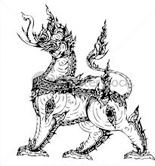 Tattooing is an ancient and global art form that existed thousands of years before Captain Cook introduced it to the Europeans after his South Pacific expedition in 1769. While their meaning has differed, historically, tattoos have most often been used to indicate status in society. For example, in Ancient China they would tattoo the symbol “prisoner” to the faces of convicts. Also prostitutes and manual workers in Japan during the 1600s would communicate their vocation through inked skin. Even though merchant and naval seamen of the 1800s began to spread the practice and popularity of tattoos to Europe and America, it was still seen as extremely exotic, drawing crowds to freak-shows and circuses. These early tattoos were created by using picks, rakes, combs and chisels to make inquisitions in the skin before adding pigment. The process was extremely painful and often used as part of a rights of passage ritual.
Tattooing is an ancient and global art form that existed thousands of years before Captain Cook introduced it to the Europeans after his South Pacific expedition in 1769. While their meaning has differed, historically, tattoos have most often been used to indicate status in society. For example, in Ancient China they would tattoo the symbol “prisoner” to the faces of convicts. Also prostitutes and manual workers in Japan during the 1600s would communicate their vocation through inked skin. Even though merchant and naval seamen of the 1800s began to spread the practice and popularity of tattoos to Europe and America, it was still seen as extremely exotic, drawing crowds to freak-shows and circuses. These early tattoos were created by using picks, rakes, combs and chisels to make inquisitions in the skin before adding pigment. The process was extremely painful and often used as part of a rights of passage ritual.
Thanks to the electric tattoo machine, getting a tattoo today is far less painful. Modeled after Edison’s autographic printer, Samuel O’Reilly invented the modern tattoo machine in 1891. The machine works by using a hollow needle filled with ink. As an electric motor vibrates the needle in and out of the skin (up to 30,000 times a minute) a tiny drop of ink is deposited 1/8th of an inch below the surface of the skin.
Tattooing had a difficult time finding popularity in America during the 1900. After the war, most Americans associated tattoos with delinquent outcasts. Then, the early sixties saw a hepatitis outbreak and much press on blood poisoning and other diseases associated with un-sterilized tattoo needles.
Tattooing found a Renaissance in the late 1960s. This resurgence was fueled by new techniques and styles. One such innovator was Lyle Tuttle from San Francisco, who is often considered the father of modern tattooing. He was handsome and articulate about the medium and its history and therefore got the attention of magazines and television. He tattooed celebrities, particularly women, putting a little heart on Janis Joplin. The popularization of woman getting tattoos softened the art form allowing it’s eventual entry into mainstream American culture. Today tattoos are more popular with woman than men with 23% of woman having at least one tattoo compared to 19% of men.
